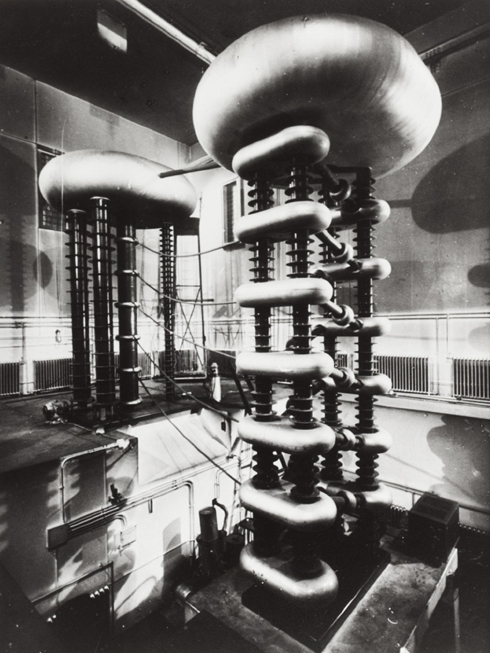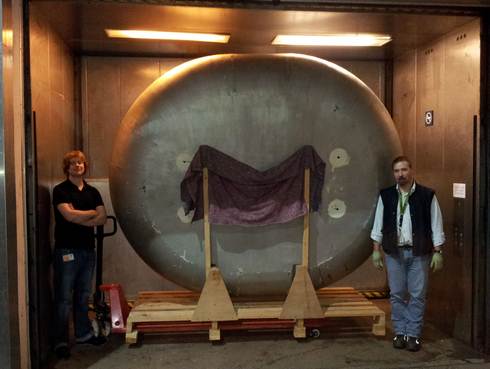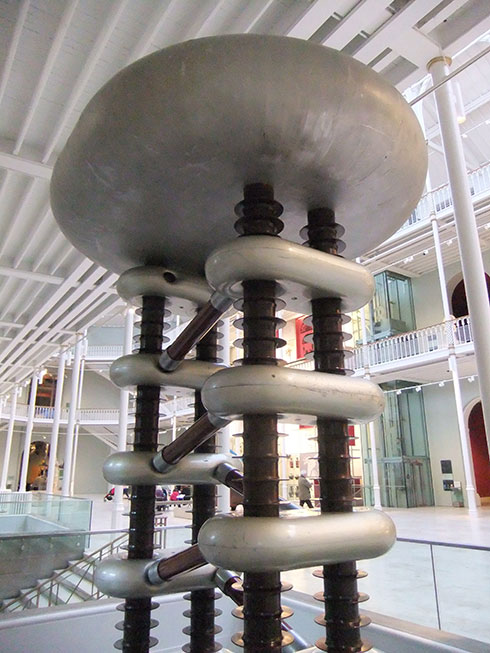Part of the Cockroft-Walton generator is now on display in the Grand Gallery at the National Museum of Scotland. It is made up of large oval metal capacitors spaced between finned, round, insulated Bakelite pillars and each diagonally connected by long, thin diodes.
All the component parts were found on shelves in a store room at the National Museums Collection Centre. Before any cleaning took place, we had a test run at constructing it. This gave us an idea of the height we could reach, the tools we would require on site and the order in which the components would be installed in the relatively confined location.
Cutting it down to size
It was decided that the generator would stand in the Grand Gallery, near the original entrance to the Museum. The first floor balcony in the main hall restricts the height to which the accelerator can be built. We also had to consider the size of the scaffolding, including a weight-bearing beam supported at the top to lift some of the heavier components over the glass rail and down into the space below, where the generator would eventually stand.
Comparing the on-site measurements of the area, with those from the test run made it clear that we would not have enough space to build up the whole generator. The generator in the original black and white photograph, which we were using as an instruction manual, was made up of fourteen capacitors (including the larger one at the top) and twelve diodes; it is now assembled with twelve capacitors and ten diodes.

On the move
The large, domed, dinghy shaped capacitor at the top weighs 200kgs and was transported on a custom-made frame. In advance of moving this to Chambers Street, a transportable jig made of corrugated plastic was constructed. To be certain the frame had a safe passage through the Museum, we walked this jig along the route from the delivery bay to the site in the Grand Gallery, through all the lifts, tight corners and doorways. Heights were also checked, and the goods lift (the only way into the Museum with this object) was the only close shave, with less than ten centimetres to spare.

A delicate move
Prior to the object arriving, a scaffold was constructed in the area with space for the generator to be constructed within. After the Museum had closed, all the parts were wheeled into the Grand Gallery, and using a two point lift the base was lifted up above the glass rail, pulled across and lowered into the space. Next, the top capacitor was raised to the top of the scaffold. This was suspended there until all the structure had been completed beneath and it could be lowered onto it.
The pillars, capacitors and diodes were built on top of this as high as we could using our smaller mobile scaffolds, which can be maneuvered around the object. The large top capacitor was then lowered down and attached to the top pillars. We finished work that night at about 2am. The whole object weighs 1282 kg (2826 lbs.) and is about 6 metres (19 feet 8 inches) tall.

